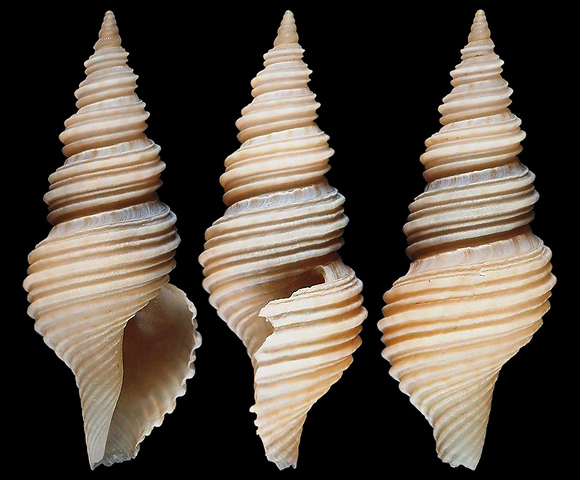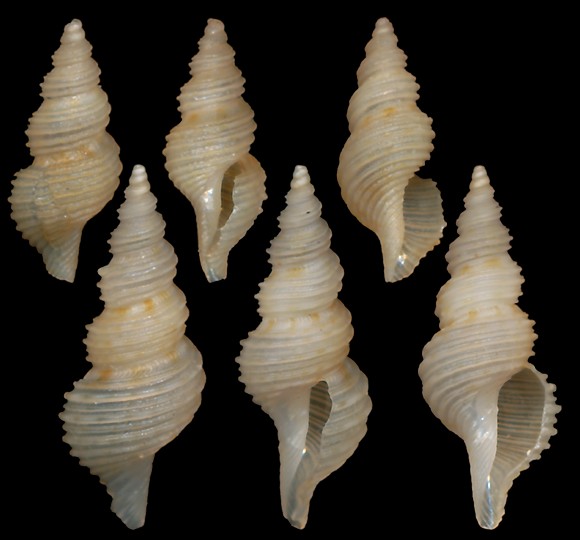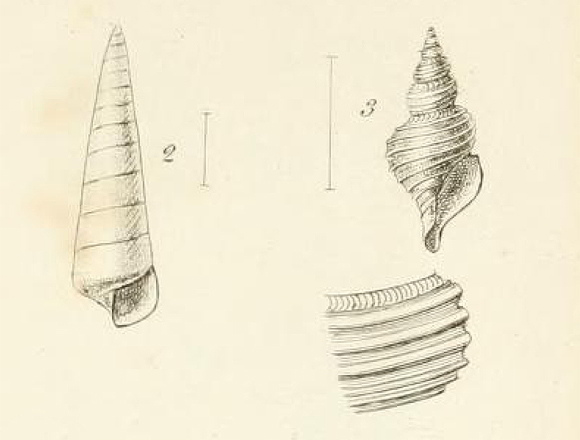
Azores & lusitanian seamounts to Mediterranean.
Predator in the circalittoral down to the continental margin.
Original taxon: Pleurotoma teres.
80m deep, in the channel of Hvar island, Split-Dalmatia Comitat, S. Croatia. 9mm. Original pictures provided by R. Stanić (HR) – (CC BY-NC-SA).

« Shell elongately fusiform, spire acuminated ; whorls round, tapering, smooth at the suture, spirally ribbed, ribs smooth, prominent, interstices cancellated with striae; canal long. » – L. A. Reeve: “Monograph of the genus Pleurotoma”, Conchologia iconica vol. I, London 1843-1844, p.156.
Synonyms: borealis, laviae…
85-100m deep, off Bari, Puglia, S. Italy. 5-8mm.
« A very elegantly formed shell, remarkable for the tapering regularity of the spiral ribs. » Notice, on the subsutural ramp, a band of comma-shaped brown blotches.

« When dredging in the channel called the Minch, midway between Skye and the mainland, in 40 fathoms water, Mr. MacAndrew procured a single specimen of a Pleurotoma which differs only in size (being larger) from a new species which I discovered on the coasts of Asia Minor, and which has been figured by Mr. Reeve. It is at once distinguished from all other British Pleurotomae in the sculpture, the ribbing being spiral. It is a slender turrited shell of eight or nine terete, spirally ribbed whorls ; the ribs are broad, rounded and smooth, the central ones having intermediate smaller ones ; a broad crenated furrow runs round the summit of each whorl, bounding the suture. The ribs are about twelve on the last whorl, four or five on the others. The notch is sutural, broad and deep. The canal is long and slightly curved. The aperture is as long as the upper whorl. The apex of the spire is acute. The colour is yellowish white. » – E. Forbes: “Notice on some additions to the British Fauna discovered by Robert MacAndrews, Esq., during the year 1844”, The Annals and magazine of natural history” vol. XIV, London 1844-1845, p.412 and plate X, fig.3.